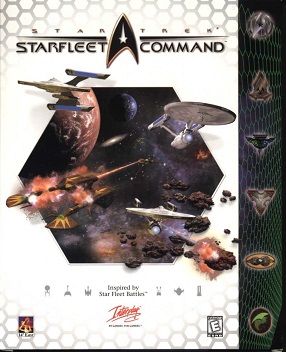
Star Trek: Starfleet Command is a computer game based on the table-top wargame Star Fleet Battles. It was developed by 14° East and Quicksilver Software and published by Interplay Entertainment. It was released in 1999 for Microsoft Windows. It simulates starship operations, ship-to-ship combat, and fleet warfare in the Star Trek universe. An expanded version was released in 2000 titled Star Trek: Starfleet Command - Gold Edition. It includes the latest patch and all the missions that were downloadable from the official website.
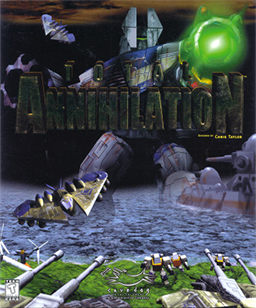
Total Annihilation is a real-time strategy video game created by Cavedog Entertainment, a sub-division of Humongous Entertainment, and was released in September 1997 by GT Interactive for Microsoft Windows and Mac OS. Two expansion packs were released, The Core Contingency on April 29, 1998 and Battle Tactics on July 20. After the closure of the Cavedog Entertainment in 1999, the intellectual property fell to Infogrames.

Panzer General is a 1994 computer wargame developed and published by Strategic Simulations Inc. (SSI). It simulates conflict during World War II. The designers of Panzer General were heavily influenced by the Japanese wargame series Daisenryaku.

Age of Wonders is a 1999 turn-based strategy game co-developed by Triumph Studios and Epic MegaGames, and published by Gathering of Developers.

Shogun: Total War is a turn-based strategy and real-time tactics video game developed by The Creative Assembly and published by Electronic Arts for Microsoft Windows personal computers. Released in June 2000, the game became the debut title in The Creative Assembly's Total War series. Set in Japan during Sengoku jidai—the "Warring States" period from the 15th to the beginning of the 17th century—the game has players adopt the leader of a contemporary Japanese clan, attempt to conquer the nation and claim the position of shōgun. The turn-based aspect of the game focuses on a map of Japan where military force, religion, diplomacy, espionage and economics all influence the player's actions, whilst battles are fought in a 3D real-time mode.

Falcon 4.0 is a combat flight simulation video game developed by MicroProse and published by Hasbro Interactive in 1998. The game is based around a realistic simulation of the Block 50/52 F-16 Fighting Falcon jet fighter in a full-scale modern war set in the Korean Peninsula.

Command & Conquer: Red Alert 2 is a real-time strategy video game which was released for Microsoft Windows on October 24, 2000 as the follow-up to Command & Conquer: Red Alert. Red Alert 2 picks up at the conclusion of the Allied campaign of the first game. Its expansion pack is Command & Conquer: Yuri's Revenge, released a year later in 2001. Red Alert 2 was principally developed by Westwood Pacific in collaboration with Westwood Studios.
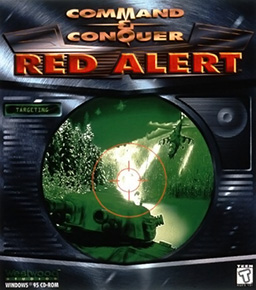
Command & Conquer: Red Alert is a real-time strategy video game in the Command & Conquer franchise, developed and published by Westwood Studios in 1996. The second game to bear the Command & Conquer title, Red Alert is the prequel to the original Command & Conquer of 1995, and takes place in the alternate early history of Command & Conquer when Allied Forces battle an aggressive Soviet Union for control over the European mainland.
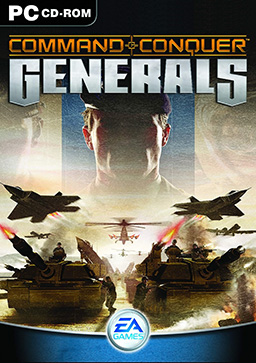
Command & Conquer: Generals is a real-time strategy video game and the seventh installment in the Command & Conquer series. It was released for Microsoft Windows and Mac OS X in 2003 and 2004. The Windows version of Generals was developed by EA Pacific and published by EA Games, the Mac OS X version was developed by i5works and published by Aspyr Media. The Mac OS X version was released by Aspyr on April 12, 2004. In the game, the player can choose from three different factions: the United States, China and the Global Liberation Army (GLA).

Knights and Merchants: The Shattered Kingdom, known as simply Knights and Merchants, is a medieval-time based real-time strategy (RTS) video game. It was developed by Joymania Entertainment and published by TopWare Interactive in 1998. The player takes the role of the captain of the palace guards and leads the soldiers and citizens to victory. An expansion pack was released in 2001, titled Knights and Merchants: The Peasants Rebellion.
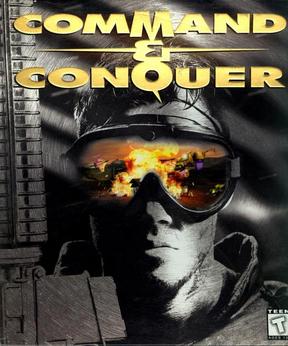
Command & Conquer is a real-time strategy video game developed and published by Westwood Studios in 1995. Set in an alternate history, the game tells the story of a world war between two globalized factions: the Global Defense Initiative of the United Nations and a cult-like militant organization called the Brotherhood of Nod, led by the mysterious Kane. The groups compete for control of Tiberium, a mysterious substance that slowly spreads across the world.

AH-64D Longbow is a realistic combat flight simulator of the AH-64D Apache Longbow attack helicopter. Released on June 3, 1996, for the PC, this simulation was developed at Origin Systems. AH-64D Longbow was the second simulator released under the Jane's Combat Simulators line from Electronic Arts.

Achtung Spitfire! is a 1997 computer wargame developed by Big Time Software and published by Avalon Hill. It is a turn-based air combat game taking place during the early half of World War II, including fixed-wing aircraft, air battles and operations by Luftwaffe, Royal Air Force and French Air Force in 1939–1943.

European Air War is a combat flight simulator developed and published by MicroProse and published for Microsoft Windows in 1998. It is a sequel to 1942: The Pacific Air War. It simulates the Battle of Britain, and the Allied Air offensives in Western Europe during World War II in 1943–1945.
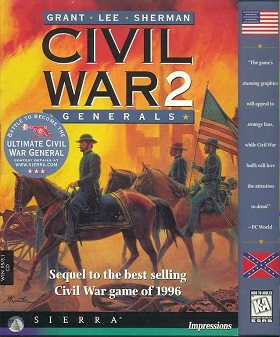
Grant, Lee, Sherman: Civil War Generals 2 is a computer game published by Sierra On-Line in 1997. It is the sequel to Robert E. Lee: Civil War General.

People's General is a turn-based computer wargame developed by Strategic Simulations, Inc (SSI). It was released in September 1998 in North America and Europe. The game focuses on early 21st century warfare in Asia. People's General, or PeG as it is commonly known, followed SSI's successful 5 Star General Series of World War II war games and their sequel, Panzer General II (PG2). It uses the same game dynamics as these earlier games—turn-based movement & fighting with military units on a hex based map. PeG uses substantially the same "Living Battlefield" game engine as PG2 but features higher quality graphics and many new features.

Longbow 2 is the sequel to Jane's AH-64D Longbow from Jane's Combat Simulations. The game was developed by Origin Systems with executive producer Andy Hollis on board, and released by Electronic Arts on November 13, 1997.
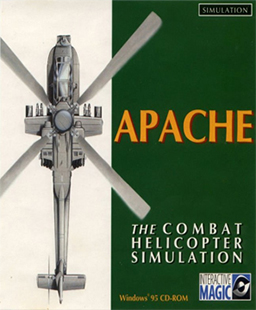
Apache is a video game released by Digital Integration in 1995 for DOS and Macintosh. The game is a combat flight simulation of the American AH-64D Apache Longbow helicopter. A successor, Hind, was released in 1996.

Warcraft II: Tides of Darkness is a fantasy real-time strategy computer game developed by Blizzard Entertainment and released for MS-DOS and Microsoft Windows in 1995 and Mac OS in 1996 by Blizzard's parent, Davidson & Associates. A sequel to Warcraft: Orcs & Humans, the game was met with positive reviews and won most of the major PC gaming awards in 1996. In 1996, Blizzard released an expansion pack, Warcraft II: Beyond the Dark Portal, for DOS and Mac OS, and a compilation, Warcraft II: The Dark Saga, for the PlayStation and Sega Saturn. The Battle.net edition, released in 1999, included Warcraft II: Beyond the Dark Portal, provided Blizzard's online gaming service, and replaced the MS-DOS version with a Windows one.

Armor Command is a military science fiction real-time strategy video game developed by American studio Ronin Entertainment and published by Ripcord Games for Windows in 1998. Set in the early 30th century, the game revolves around two factions, the United Terran Federation led by humanity, and the Vrass, a feudal slaver empire led by aliens. Armor Command was designed by Edward Kilham, known as the co-designer of Star Wars: TIE Fighter. Armor Command released to generally positive and lukewarm reviews, although seen as obscure in comparison to more notable games in the genre.





















